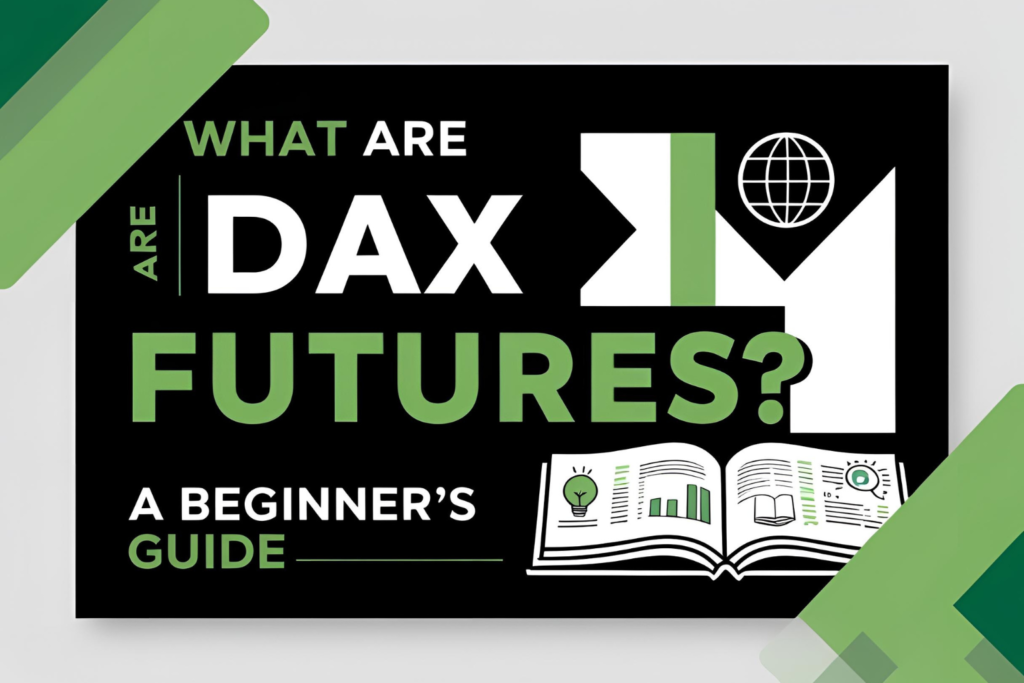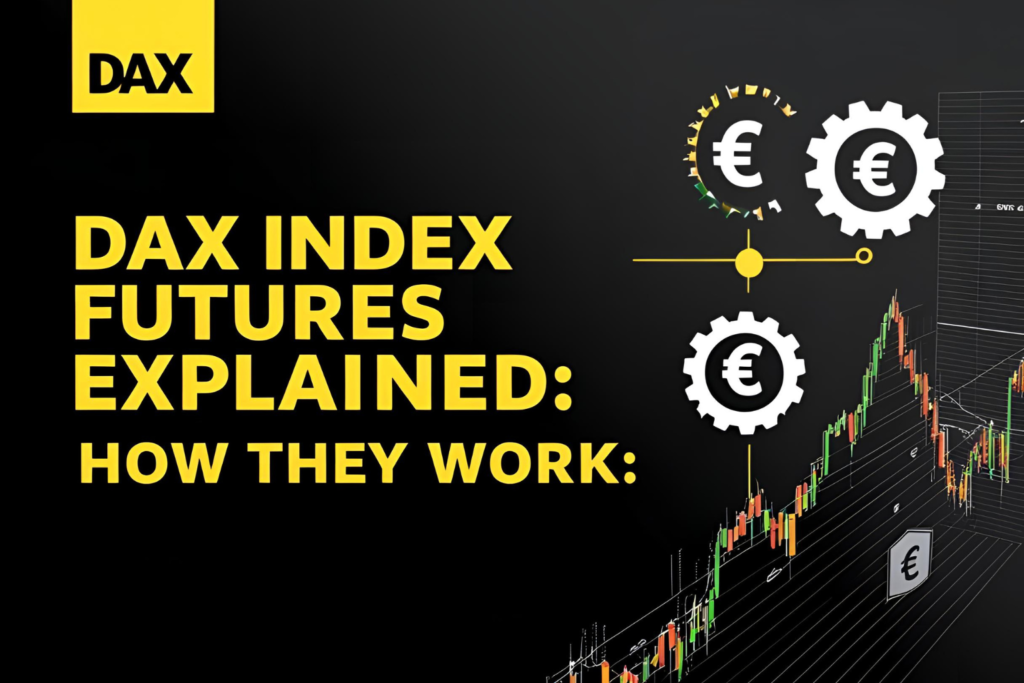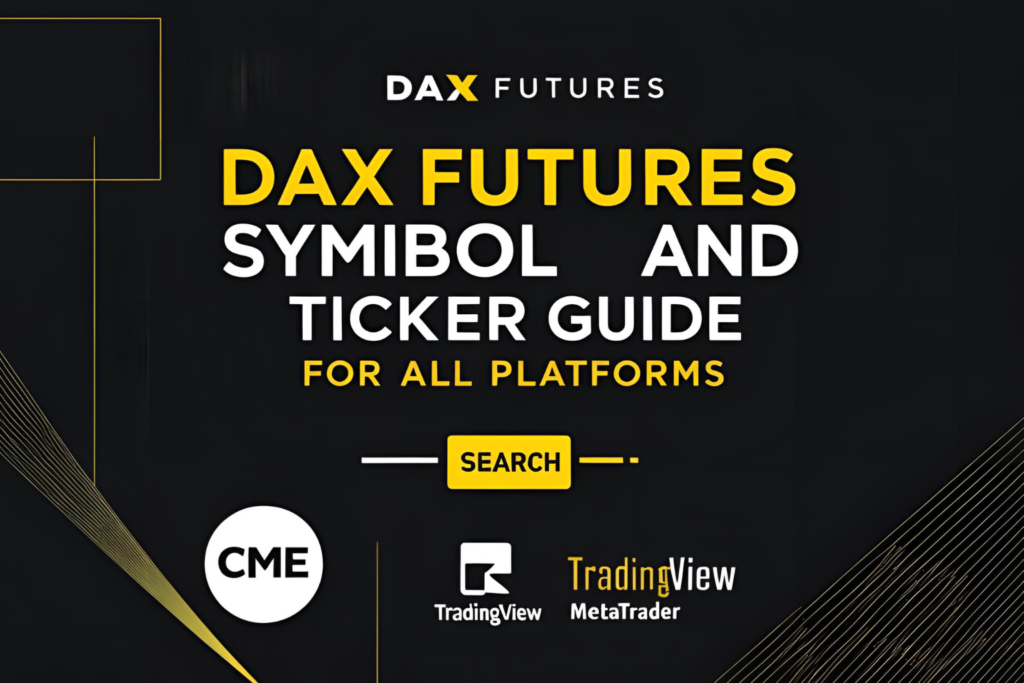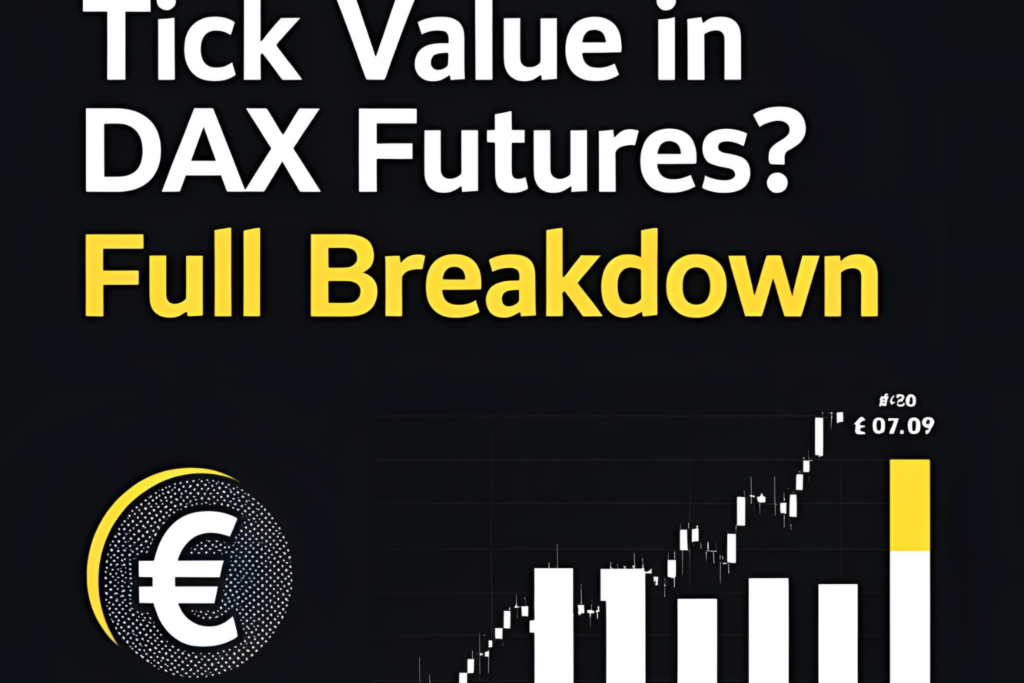Reading a DAX futures price quote can seem confusing at first glance, but once you understand the components—contract code, bid/ask, last price, volume, and tick size—you’ll be able to trade with confidence and precision.
In this guide, we break down each part of a DAX futures quote, whether you’re using Eurex, CME, or a broker platform like ThinkorSwim or TradingView.
Where You’ll See a DAX Futures Quote
DAX futures quotes appear on:
- Trading platforms (e.g., TWS, TOS, TradingView, MetaTrader)
- Exchange feeds (Eurex and CME websites)
- Market data terminals (e.g., Bloomberg, Investing.com)
- Mobile apps with futures feeds
Let’s look at the typical quote format and how to interpret it.
Anatomy of a DAX Futures Quote
Here’s what a sample quote might look like:
yamlCopyEditSymbol: FDAXM24
Last Price: 16,430.00
Change: +85.50
Bid: 16,429.50
Ask: 16,430.50
Volume: 23,400
Open Interest: 78,200
Tick Size: 0.5
Tick Value: €12.50
Key Components Explained
| Field | Description |
|---|---|
| Symbol (FDAXM24) | FDAX = Full-size DAX; M = June; 24 = 2024 expiry |
| Last Price | Most recent transaction price (in index points) |
| Change | Difference from previous session’s close |
| Bid / Ask | Best price buyers are offering (bid) and sellers are asking (ask) |
| Volume | Total number of contracts traded today |
| Open Interest | Number of active contracts that haven’t been settled |
| Tick Size | Minimum price movement (0.5 index points) |
| Tick Value | Value of 1 tick (FDAX = €12.50, FDXM = €2.50, Micro DAX = €5.00) |
Understanding the Symbol Code (Eurex Example)
A DAX futures symbol like FDAXM24 breaks down as follows:
- F = Futures
- DAX = Underlying index
- M = June (Month code: H = March, M = June, U = Sept, Z = Dec)
- 24 = Year 2024
This system helps identify expiration dates for contract rollovers.
Real-Time vs Delayed Quotes
| Type | Access | Note |
|---|---|---|
| Real-Time | Paid data feeds (TradingView Pro, IBKR, TOS) | For active traders |
| Delayed (15 min) | Free sources like Investing.com | Good for observation but not trading |
⚠️ Always confirm whether your quote is real-time or delayed, especially during volatile sessions.
Quote Behavior During Live Trading
- Bid/Ask spread may widen during low liquidity hours
- Last price often fluctuates rapidly during open/close
- Volume spikes during 09:00–12:00 CET (Europe) and 14:30 CET (U.S. open crossover)
Tips for Reading Quotes Effectively
✅ Watch the spread—tight spreads = better liquidity
✅ Monitor volume & open interest to confirm strong trend setups
✅ Track price near key levels (support/resistance, VWAP, EMA)
Final Thoughts
Once you understand how to read a DAX futures price quote, you’ll be able to interpret market behavior, gauge liquidity, and make smarter trade decisions. Whether you’re monitoring from Eurex, CME, or a broker platform, knowing what each number means gives you a clear edge in execution and risk control.
FAQs
1. What’s the difference between bid, ask, and last price?
- Bid: Highest price a buyer will pay
- Ask: Lowest price a seller will accept
- Last: Most recent transaction price
2. What does “tick value” mean for DAX?
It’s the euro amount you gain or lose with each minimum price move. Example: €12.50 per tick for FDAX.
3. How do I know if the quote is live?
Check your platform subscription or look for “delayed quote” labels.
4. Why does the spread change?
Lower liquidity or news events can cause wider spreads temporarily.
5. Is volume the same as open interest?
No. Volume is daily traded contracts. Open interest is contracts still open (not settled or closed).




